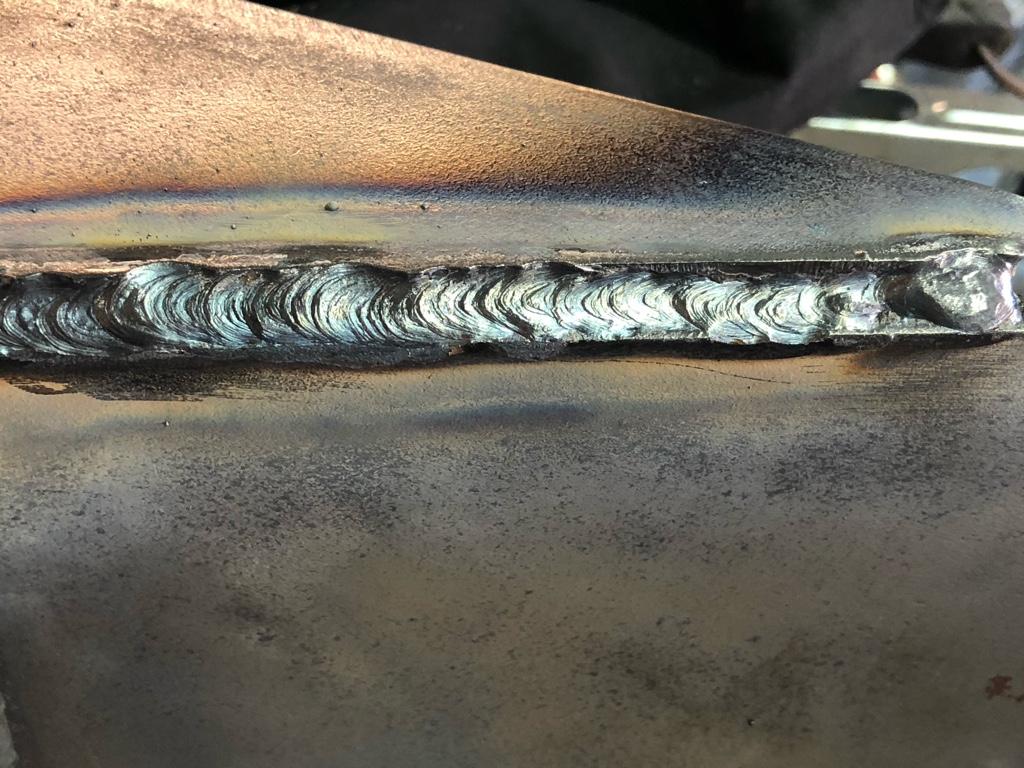Effective Ways to Prevent Weld Undercut in Your Welding Jobs
Effective Ways to Prevent Weld Undercut in Your Welding Jobs
Blog Article
Understanding the Art of Welding: How to Prevent Undercut Welding Issues for Flawless Construction Results
Performance and precision are vital worldwide of welding, where even the tiniest imperfection can compromise the structural stability of a made piece. One usual difficulty that welders face is damaging, a problem that can lead and compromise a weld joint to pricey rework. By recognizing the origin of undercut welding and carrying out reliable strategies to stop it, welders can boost their craft to new degrees of quality (Preventing weld undercut). In the search of perfect manufacture results, understanding the art of welding to stay clear of undercut problems is not simply a skill however a necessity for those aiming for excellence in their job.
Comprehending Undercut Welding

To stop undercut welding, welders ought to make sure appropriate welding parameters, such as changing the current, voltage, travel rate, and maintaining the right electrode angle. Additionally, utilizing the ideal welding technique for the specific joint setup is essential. Utilizing weaving activities or backstepping techniques can assist ensure appropriate weld steel deposition and reduce the possibility of undercut development. Normal assessment of welds throughout and after the welding process is likewise vital to catch any undercut very early and make essential adjustments to stop more defects. Preventing weld undercut. By understanding the root causes of undercut welding and applying preventive steps, welders can accomplish high-grade, structurally audio welds.
Reasons of Undercut in Welding
Understanding the factors that add to undercut in welding is crucial for welders to produce premium, structurally sound welds. Undercutting occurs when the weld metal does not properly fill up the groove created in between the base metal and the previously transferred weld steel. A number of elements can result in damage in welding. One typical cause is excessive warmth input. Welding at heats for prolonged durations can lead to the base steel melting even more than wanted, bring about damage. Insufficient welding existing or incorrect welding speed can also add to undercut. Not enough current might not provide adequate warm to melt the base and filler steels properly, while too much rate can protect against proper combination, causing undercut. Furthermore, incorrect electrode angles or incorrect lantern control strategies can produce locations of reduced weld metal deposition, advertising undercut. Comprehending these causes and carrying out proper welding strategies can help protect against undercutting concerns, ensuring solid and resilient welds.
Techniques to stop Undercutting

To alleviate the threat of undercutting in welding, welders can employ calculated welding techniques intended at boosting the top quality and integrity of the weld joints. One effective technique is to adjust the welding parameters, such as voltage, existing, and travel rate, to make certain appropriate warm input and deposition. Preserving an appropriate electrode angle and guaranteeing consistent travel rate can also help prevent undercut. Furthermore, utilizing the right welding strategy for the certain joint configuration, such as weave or stringer beads, can add to reducing undercutting. Preventing weld undercut.
Moreover, proper joint preparation, consisting of making certain clean base materials without impurities and making use of the proper welding consumables, is important in avoiding undercut problems. Employing back-step welding strategies and managing the weld bead Click This Link account can also help disperse warm evenly and decrease the danger of undercut. Routine assessment of the weld joint during and after welding, along with carrying out high quality guarantee procedures, can assist in addressing and identifying undercutting issues promptly. By applying these methods diligently, welders can accomplish flawless construction results with very little undercut problems.
Importance of Appropriate Welding Criteria
Picking and maintaining proper welding specifications is essential for accomplishing effective welds with marginal defects. Welding specifications describe variables such as voltage, present, take a trip rate, electrode angle, and securing gas flow rate that directly influence the welding process. These specifications need to be meticulously adjusted based on the sort of product being welded, its thickness, and the welding method utilized.
Appropriate welding specifications ensure the best amount of warm is put on thaw the base metals and filler material consistently. If the specifications are established expensive, it can cause too much heat input, triggering distortion, burn-through, or spatter. On the other hand, if the parameters are too reduced, incomplete combination, lack of penetration, or damaging might happen.
Top Quality Guarantee in Welding Workflow

Conclusion
In conclusion, understanding the art of welding needs a comprehensive understanding of undercut welding, its reasons, and techniques to prevent it. By guaranteeing proper welding criteria and applying quality assurance techniques, flawless fabrication outcomes can be achieved. It is vital for welders to regularly strive for quality in their welding operations to stay clear of undercut issues and generate high-quality welds.
Undercut welding, an usual problem in welding procedures, happens when the weld steel does not properly load the groove and leaves a groove or clinical depression along the bonded joint.To prevent undercut welding, welders must ensure correct welding specifications, such as adjusting the existing, voltage, travel rate, and maintaining the right electrode angle. Poor welding incorrect or existing welding rate can also contribute to damage.To mitigate the danger of undercutting in welding, welders can use tactical welding methods intended at enhancing the high quality and honesty of the weld joints.In conclusion, mastering the art of welding requires a complete understanding of undercut welding, its causes, and strategies to prevent it.
Report this page